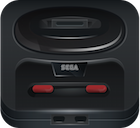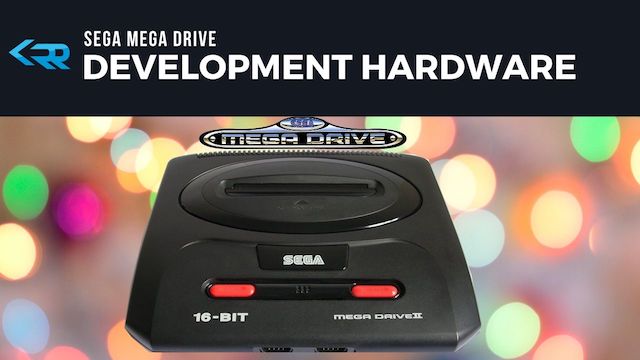
Welcome to our in-depth guide to Amiga reverse engineering! This page serves two roles. It groups all of our posts related to Amiga reverse engineering, and it aggregates high quality sources from the web into create a unified reference.
The content starts high level, outlining the system, its history, and its official game development process, then moves into low level details with a focus on reverse engineering and homebrew development.
The Sega Mega Drive, also known as the Sega Genesis in North America, was a popular gaming console released by Sega in 1988, and has since become a beloved classic of the gaming world.
Sega Retro has an excellent page covering the history of the Sega Mega Drive in great detail, it is highly recommended that you read this before anything else:
Modern Vintage Gamer has an excellent video about the history of reverse engineering on the Sega Genesis. It covers the technical and legal strategies used by Electronic Arts and Accolade to bypass the console’s TMSS security chip, detailing how clean-room reverse engineering led to a landmark court ruling for software interoperability.
Before diving in its best to check if there are any existing reversing projects for the Sega Mega Drive that you can contribute to, check out our other post specifically on this topic:
There were many exclusive games for the Mega Drive and the various hardware add-ons that were released for it, these are ideal targets for reverse engineering and porting to other platforms:
If you’re interested in reverse engineering software for the Sega Mega Drive gaming console, it’s essential to have a strong understanding of the hardware that powers it. By comprehending the inner workings of the Mega Drive hardware, you can better understand how the software interacts with the hardware and how you can potentially modify or enhance it.
In this section of our guide, we will provide you with detailed information and resources on the hardware of the Sega Mega Drive, including retail, prototype, and development hardware.
In order for game developers to create software for the SEGA Mega Drive, they had the choice of a number of different development hardware to purchase, or they could go it alone and create their own hardware. To find out more check out the post below.
The Sega Digitizer System was a development kit specifically for creating sprites and background tiles officially inside SEGA. It is unclear if they ever sold the system to third party developers. It required a NEC PC-98 for development which was the ideal choice for many game developers in japan.
It had a rudimentary touch screen with a pen allowing artists to “draw” pixels directly on the screen.
This was not exclusive to Mega Drive development, it was also used in early sega arcade games, system 1 and system 16 (1986).
You can find out more including lots of images on Video Games Densetsu: The Sega Digitizer System, a tool used by graphic…
Although almost all Mega Drive games were written in 68K assembly there is one known commercial Mega Drive game to be written in C, Sonic Spinball 1!
Popular choices for computers for writing Mega Drive games in Japan were the Sharp X68000 (it shared the same processor) and the Intel 8086 based NEC PC-9801. In the UK the Amiga was a very popular choice for writing Mega Drive games due to it being based on the same 68000 CPU.
The Sharp X68000 is known to have been used at Game Arts 2 and is a smart choice as the assembly code can be tested out on the hardware directly and only required the Mega Drive development kit for testing the graphics and sound capabilities. So game logic could be tested more efficiently.
The NEC PC-9801 is known to have been used at SEGA of Japan thanks to the Sound-Source leak 3.
onaretrotip has an excellent interview with Stoo Cambridge about porting Amiga games like Megalomania and Sensible Soccer to the Sega Mega Drive. It covers the technical similarities (shared 68000 CPU) and differences (bitmap vs. tile-based graphics), as well as specific tricks used to overcome the Mega Drive’s color limitations, such as overlaying playfields to simulate 32-color intro screens.
The development of the game Alien Soldier and other games by Treasure had only 4 people working on it, 2 programmers and 2 game designers which we found out in a translated interview with Masato Maegawa4:
In the early 90s, for our Megadrive developments, all our developments were done with 2 programmers and 2 designers max. Alien Soldier, in fact, started out with just one person, NAMI, who took on the role of both designer and programmer.
At Treasure (e.g Alien Soldier) Masato Maegawa reveals that it takes around about 10 months but that more complicated games could last 2 years 4:
In the Megadrive days we took about 10 months for a game; now it’s about 15 months. There were some titles that took us a full 2 years, though. Although he also revealed that there was a tight development cycle for Alien Solider as the deadline was January 3rd 1995 and they were working through the New Year switch.
Hardcore Gaming 101 has a video showing the design document created for the Mega Drive game MUSHA:
To find out about the Official SEGA Mega Drive Software development Kit check out our page on the topic:
It was common in the industry to develop custom software in-house to make the game development process easier not just for the current game but also future games targetting the same hardware.
For the development of the Mega Drive game Alisia Dragoon, Game Arts created some in-house development software called KETCHUP and DARI:
In the image below you can see the Main Programmer Naozumi Honma on the left and Assistant Programmer Osamu Harada on the right along with their Sharp X68000 development computers (and Mega Drive controller presumably hooked up to a development kit) 2:
In an interview with Computerphile the Tanglewood developer Matt Phillips explains the basics of how assembly language programming works for creating Mega Drive games:
In the video he uses Windows 95 and Notepad++ to edit the assembly files, which are then assembled using the MS-DOS command:
snasm68k /sdb test.asm, test.cof
You can see it being assembled in the screenshot:
It is then loaded into the SNASM debugger (V2.0) on a SNASM Mega CD Development Kit, which connects to the PC via an ISA card and SCSI cable.
The Youtuber Game Hut has a series of tutorials on Sega Mega Drive programming. Part 1:
Part 2:
The Motorola 68000 - Powering the Gaming Revolution Introduction The video game industry has witnessed remarkable technological advancements throughout its history, with one pivotal component that played a significant role... ...
Awesome list of SEGA Mega Drive and Genesis Game Development and Reverse Engineering information
...
The SEGA Mega drive was released on October 29th 1988 in Japan following with North America almost a year later and Europe another whole year later than that! During its... ...
Sega Mega Drive (Genesis) SDK Unlike the original Master System or SG-1000 systems, SEGA provided third party developers with some tools to make Mega Drive development easier. Files leaked There... ...

Have you ever wondered what exactly is inside those retro game Cartridges (ROMs)? In this post we will find out the purpose of ROM cartridges and how they worked. Advantages... ...

Working At SEGA Documentary This rare documentary was part of Careers for the 21st Century by Takeoff Multimedia, it shows what life was like as a developer working at SEGA... ...